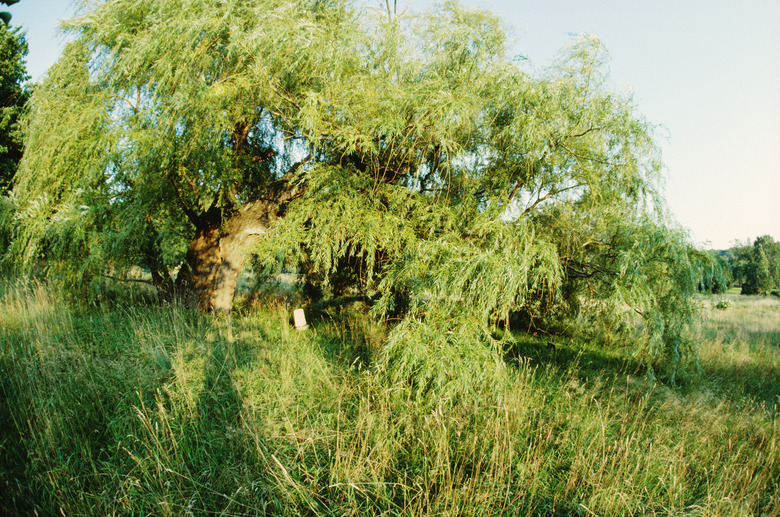Is My Willow Tree Dead?
Willow trees are often planted to enhance the natural landscape. However, trees often succumb to diseases such as blight, scab or black cankers. In addition, willow trees may receive winter injury that prevents them growing in the spring. It is important for gardeners to find out their willow's current health condition and remove dead trees from the landscape promptly. Dead trees turn into homes for pests and insects, which puts surrounding trees at risk.
Spring
Spring is the best time to see if your willow tree is dead. In the early fall, willows start to enter a state of dormancy.The trees defoliate and stops producing growth. In the early spring, willows come out of dormancy to exhibit new growth. However, dead willows will continue to decay. Oftentimes, long winters may delay willows from coming out of dormancy. Wait a few weeks after the last frost to see if there are signs of life on your willow.
Blooms
Willow trees bloom in the spring. Their flowers differ in shape, color and size depending on the species. For example, golden willows produce greenish-yellow flowers, while pussy willows develop gray or yellow blooms. Willow trees that do not produce blooms in the spring may have died out. However, willows like pussy willows are one of the first trees in the yard to bloom in the spring, according to Iowa State University. Make sure that you haven't just missed their bloom date when you check.
Leaves
Wait for the summer to check your willow's leaves, as suggested by Houston Parks and Recreational Department. Healthy living leaves appear green. Brown-looking leaves indicate that the willow tree has succumbed to a health problem. Defoliation is not a good way to tell if your tree is dead. Willows are known for defoliating throughout the year. In fact, a lot of leaves may drop right before the tree goes dormant.
Bark
Inspect your willow's limbs and bark to see if the tree is alive. Limbs that have fallen on the ground is not a good sign for your willow. Use a knife to scrape the bark on the trunk of your willow tree, as suggested by the Houston Parks and Recreational Department. Sterilize the knife before making a scrape in case the tree hasn't died. If there is greenish white underneath the scrape, your willow is alive. Brown or black indicates a dead tree.
